NORTH YARMOUTH — The orchard where David Buchanan is foraging is filled with beautiful, managed trees, pruned into picture-book shapes, lightly sprayed to keep down pests. Rosy red apples, tons of pinkish-mauve, some tiny yellow crab apples and a few easily recognizable varieties like Empire and Cortland. It is a bumper year for apples in Maine, and these are ready for a plate and a wedge of cheese.
Buchanan keeps getting distracted by what lies beyond the mowed lawn of Toddy Brook Farm’s orchard, to trees perhaps from an older orchard, being swallowed up by the encroaching woods on one side, or the spindly trees along the hedgerow to the south, the ones that likely sprang up from someone’s tossed apple core decades ago and were never cultivated.
“All the best stuff is along the edges,” Buchanan tells the landowner, Emily Drappi. Drappi moved into her farm only a year ago, and she’s got more apples than she has time to process. She’d driven by Buchanan’s place in Pownal, seen the sign for his business, Portersfield Cider, and called to offer him some of the fruit. She’d been thinking he’d want the pretty stuff and indeed Buchanan happily harvested several big leaf-bags’ worth of these beauties to press. He’d use the dessert apples to make fresh cider.
But what interests him most for making his hard (alcoholic) cider are the stragglers, the trees that have had to work hard to survive and thus look like disheveled runts compared to what’s in the orchard proper. They tend to be spitters more than eaters, and hold their flavors tight and strong. Buchanan drags his tarp and a makeshift shaker he’s rigged together from some PVC piping through the tall grass and bushwhacks himself into position to fill the tarp with apples from the tree with no name.
“There’s also one back there that has apples that are kind of brown,” Drappi says, gesturing to an even thicker thicket closer to the road. “Maybe they are russets?”
Buchanan isn’t all that interested in identifying varieties – he’d pass that duty off, as most in Maine do, to heritage apple guru John Bunker – but he looks intrigued and soon disappears into the thicket, emerging with a few apples that look as though they might have been shrink-wrapped in brown paper bags. He hands them out for tasting.
“I love russets,” he said. The apples are crisp and have great flavor, but he says they need about three more weeks on the tree. “I’ll definitely come back for these.”
On the drive between Pownal and North Yarmouth he said that this year, like 2015, is such a good year for apples he can afford to be selective about what he forages. There are good apples and exceptional apples, as well as plenty not worth bothering with. “I am not picking every tree out there by any means,” he said. “It is maybe one in ten.”
In 2016 the trees were resting up after that bumper year, or maybe weather had an impact, but at any rate, he drove 200 miles in one day before he filled the car with foraged apples he was fairly confident would make good cider.
THE TIME TO BEGIN
“It’s up to each of us to decide what we’ll leave to future generations,” Buchanan wrote in the closing passage of his book “Taste, Memory: Forgotten Foods, Lost Flavors and Why They Matter.” “And the time to begin is now.”

David Buchanan chats with guests during the first big event at his orchard on Sept. 16.
That passage dates to March 2012, fittingly, given that it was just before he and his wife, Karla, closed on their 117-acre property in Pownal, barely a 10-minute drive from Toddy Brook Farm. He’d been in Maine for more than a decade, gardening everywhere from his Portland backyard to patches of nearby farmland he leased. He was a founder of the Slow Food chapter in Portland and a regular vendor at the farmers market, selling, among other things, fruit trees. He’d also become a collector of interesting trees, who had begun experimenting with grafting a few years earlier, right around the same time he started playing with fermenting fruit into hard cider, using Carlo Rossi gallon jugs he’d found in plentiful supply at the redemption center (“they are an excellent way to experiment,” he says, grinning).
He needed a home for an orchard, an orchard that would produce ciders that look nothing like the jugs of brown stuff at the supermarket – alcoholic, yes, but also full of the intrigue of varieties either lost to history or maybe even never known. Who could say, for instance, where that brown russet in Emily Drappi’s yard came from, or what its original purpose was, if it even had one?
Buchanan was right on trend, getting into the hard cider business – 2012 was the year that American beer makers, including Boston Beer Co., makers of Sam Adams, jumped into the market – and he knew it. But planting an orchard is not like planting kale; his trees needed time to grow. Most are on dwarf or semi-dwarf stock, so they’re on an accelerated schedule to bear fruit, but it is still a matter of years, not months, to maturity. Both being on trend and being on a necessarily slow timeline wasn’t ideal. For instance, this year and last, mass market hard cider sales were down after a string of boom years. But craft cider is still on the rise, according to data from Nielsen released earlier this year.
“What worried me then is what worries me now,” he said later over a lunch of sliced tomato, hummus and sauerkraut sandwiches in his kitchen. “It is very hard to make cider in quantity from anything but leftover dessert apples and personally, I don’t like to make cider with those apples, and I don’t really like to drink cider with those apples.”

A guest at Portersfield Cider in Pownal holds a samples of David Buchanan’s hard ciders.
Other orchards are adding more interesting varieties for cider as the overall appreciation for old-fashioned, localized flavors takes off. But that takes time too.
“And in the meantime,” Buchanan said. “The consumers have developed certain expectations of what a cider is and what it will taste like, and I worry about that.”
If they taste the sweet stuff, or the stuff that’s been flavor-enhanced with, say, some other fruit, then they might not want something as unusual – and as dry – as what he’s making.
When the Buchanans closed on the Pownal property, he gave himself five years to have the place up and running, meaning, with a cider house and a tasting room. He not only made the deadline, he beat it by five days, opening the tasting room on April 29. He’s served as his own general contractor for renovating the part of the old farm where he and his wife live, and building the cider house and a lofty and inviting tasting room from scratch.
Actually, it’s not quite from scratch. The beams for the tasting room come from a 19th-century house in Guilford, which someone had numbered and salvaged, along with a basic diagram of how they went together, and sold on craigslist.
“A lot of my work in the last few years has been construction,” Buchanan said.
FRUITS OF HIS LABOR
Now he’s shifted gear into welcoming the public in a big way. On Sept. 16, Maine’s open winery day, he brought in a local trio to play Brittany-style music (French, not Spears) and was serving platters of Winter Hill cheese, hummus, olives and smoked fish alongside flights of some small-batch ciders, including one made with wild pears from a single tree.
The week had tended to humid gloom, but now the sun was out and as the quartet played and the guests sipped and nibbled, Portersfield Cider looked less like a farm in Pownal than something straight out of the French countryside. In the back of the tasting room, under a tent, the apples from Toddy Brook Farm were being pressed into a fresh juice and small children had gathered to watch the process with great interest.
A couple of women who had met Buchanan that morning at the Portland Farmers’ Market finished up their cheese plate and a flight and then headed into the cider house to settle up and buy a few bottles for the road. Buchanan doesn’t love the descriptor “cider house,” but he uses it. “For lack of a better term,” he said. “I don’t like the term hard cider, either.”

Samples of David Buchanen’s hard ciders, and accompanying foods, set on the table in front of guests in the tasting room.
He thinks of it as conjuring up visions of apple cider and doughnuts. And hayrides? “Yes.” You won’t find those at Portersfield.
“I am licensed as a winery,” he said. “And in every way, cider is identical to wine making. We’re just a different fruit and lower alcohol.”
The language issue, he said, is a byproduct of the lost years of cider making, one of those food traditions he wrote about in “Taste, Memory,” the ones that were nearly forgotten.
“Having lost the tradition, we also sort of lost our ways of talking about it,” Buchanan said.
Some of the guests wandered through the orchards, fenced off from the deer. Buchanan said he’s planted about 700 trees already. Many are early American apples with some history as hard cider trees and many are what he calls “horticultural oddities” that he knows very little about. “I knew when I grafted them that most of them wouldn’t pan out very well.”
He’s barely sprayed, he said, not that he’s vehemently opposed to spraying (as long as it’s organic and low input) but because in this grand experiment, he wants to put trees to the test, to see how they fare in wet springs, when disease can run rampant. He picks caterpillars off by hand when he sees them. But this is survival of the fittest, and he’s OK with what hasn’t thrived.
“All in all, it has played out the way I hoped,” he said.
He does make a few ciders that will taste the same, or close to it from year to year, like his Original Dry (a mix of Baldwin, Northern Spy, Jonagold and Liberty) or Aronia (his lone concession to an apple blend, in this case, with elderberry and aronia juices). He’ll keep consistency in the flavors in part by returning to the same trees. Like maybe that one up in Deer Isle that produced a cider the guests seemed to be loving.
Even when his own trees are producing heavily, he’ll remain an explorer and forager.
“I just find it much more interesting to go out and find abandoned trees around Maine, or seedlings, that make the kind of cider that I want and try to develop character from that. I don’t want to try to replicate something that is being made in Europe.”
Why would he, when Maine has so many mysterious trees offering up unique gifts? Even the wild tree behind his chicken coop, one that was there when he arrived, has something to offer. What about the one behind the tasting room, heavy with yellow apples? He grimaces. Not worth it. “Only one in 10 is good,” he says again.
It’s apparent he enjoys living with these odds – that many more trees to taste.
Mary Pols can be contacted at 791-6456 or at:
Twitter: MaryPols
Send questions/comments to the editors.


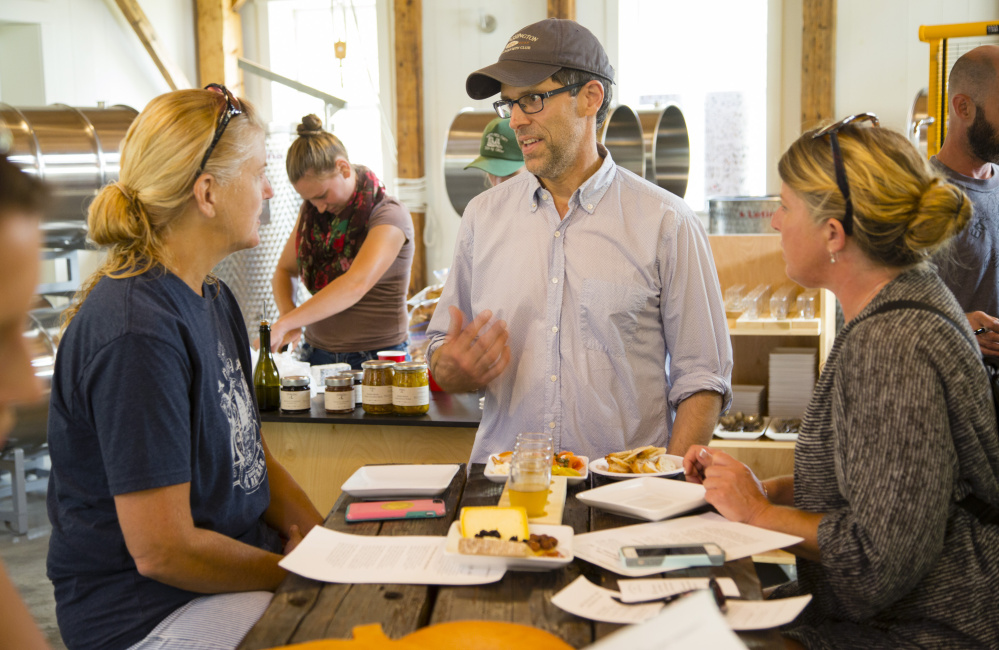
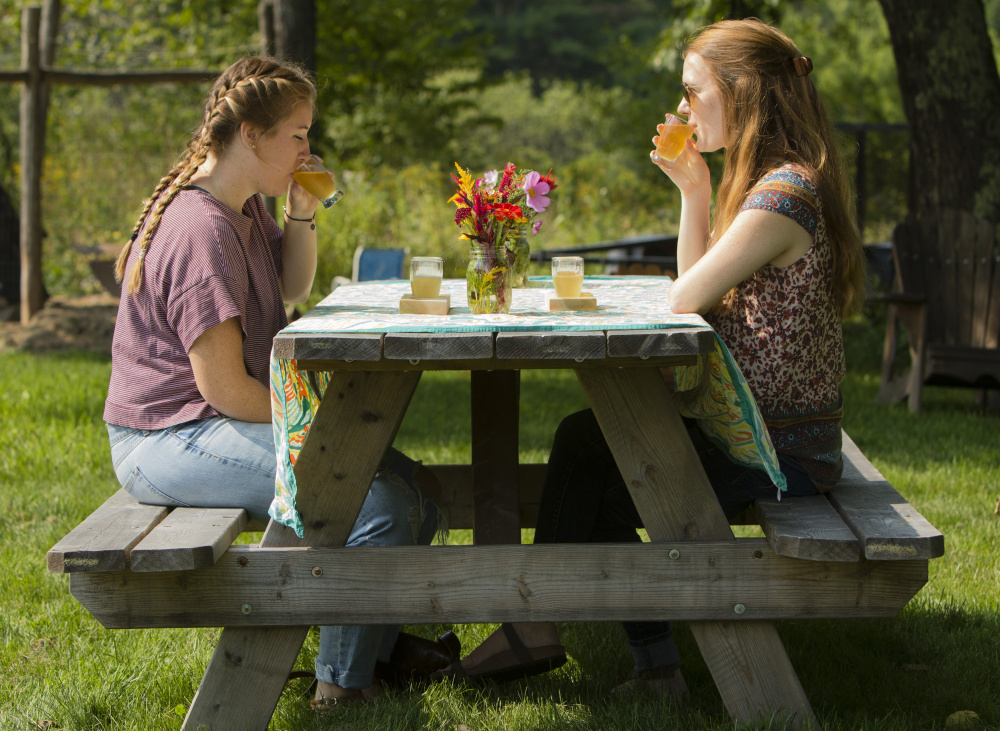
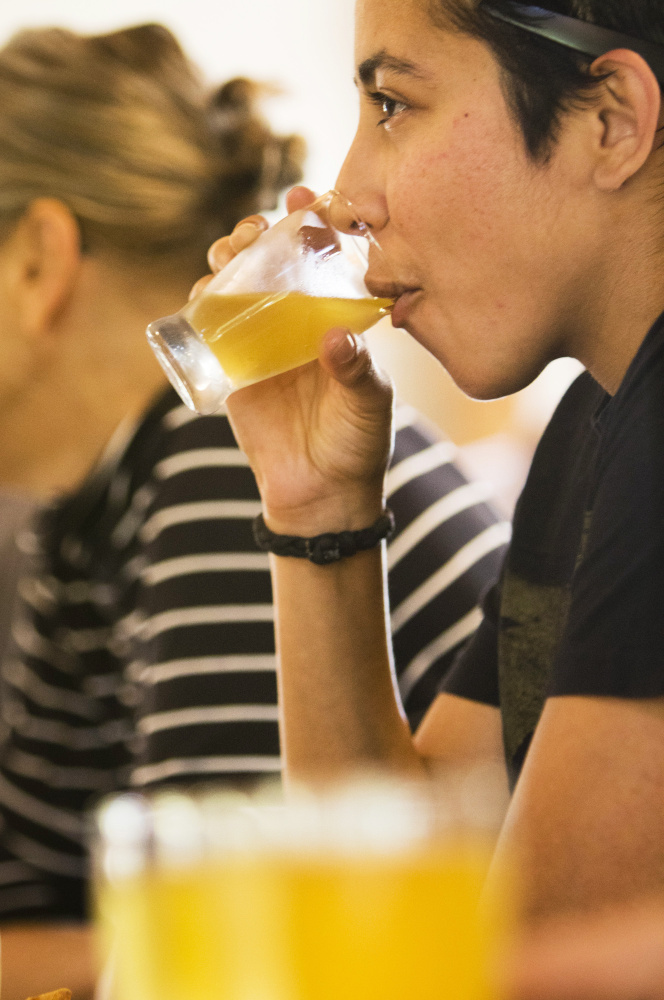
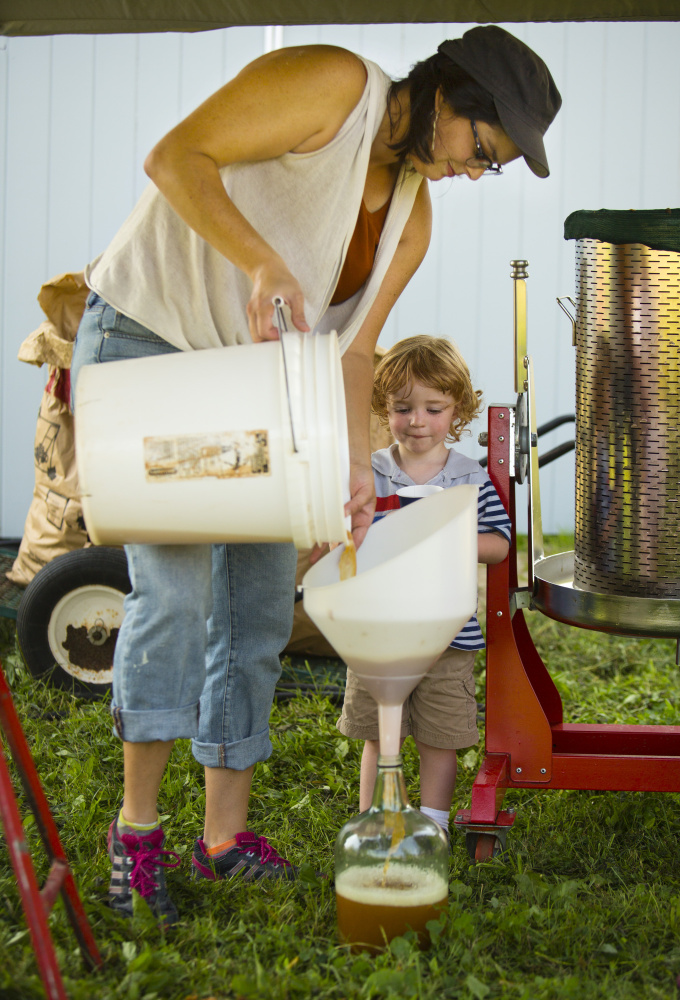
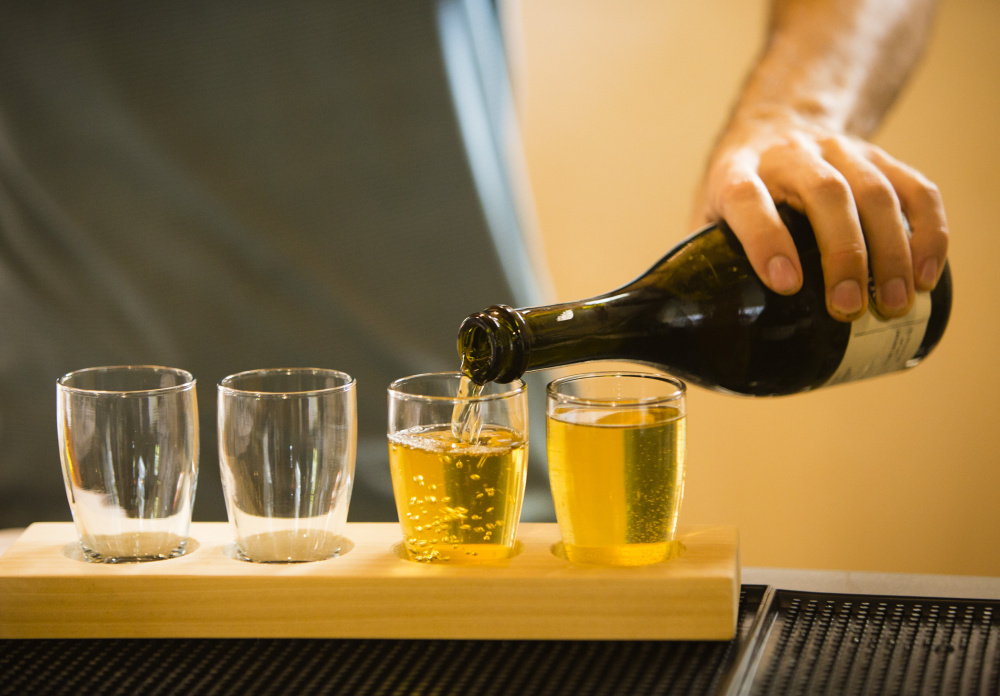
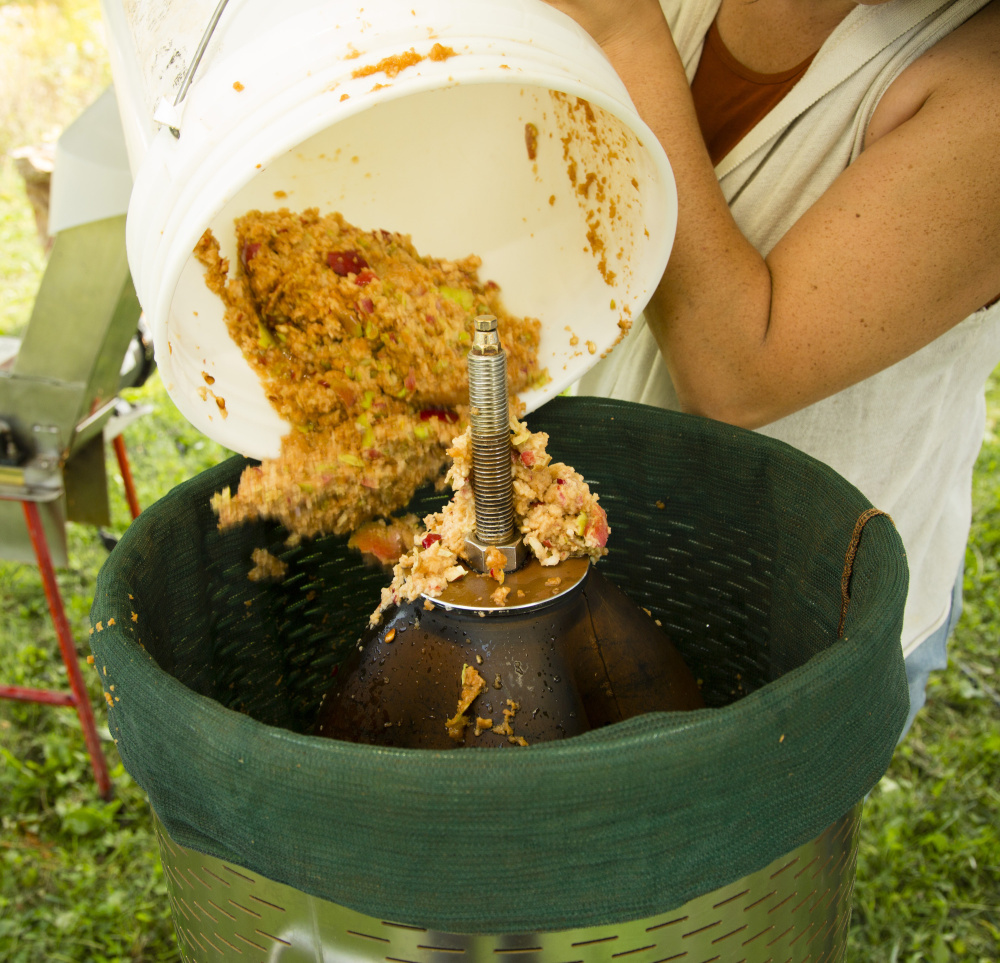

Comments are no longer available on this story